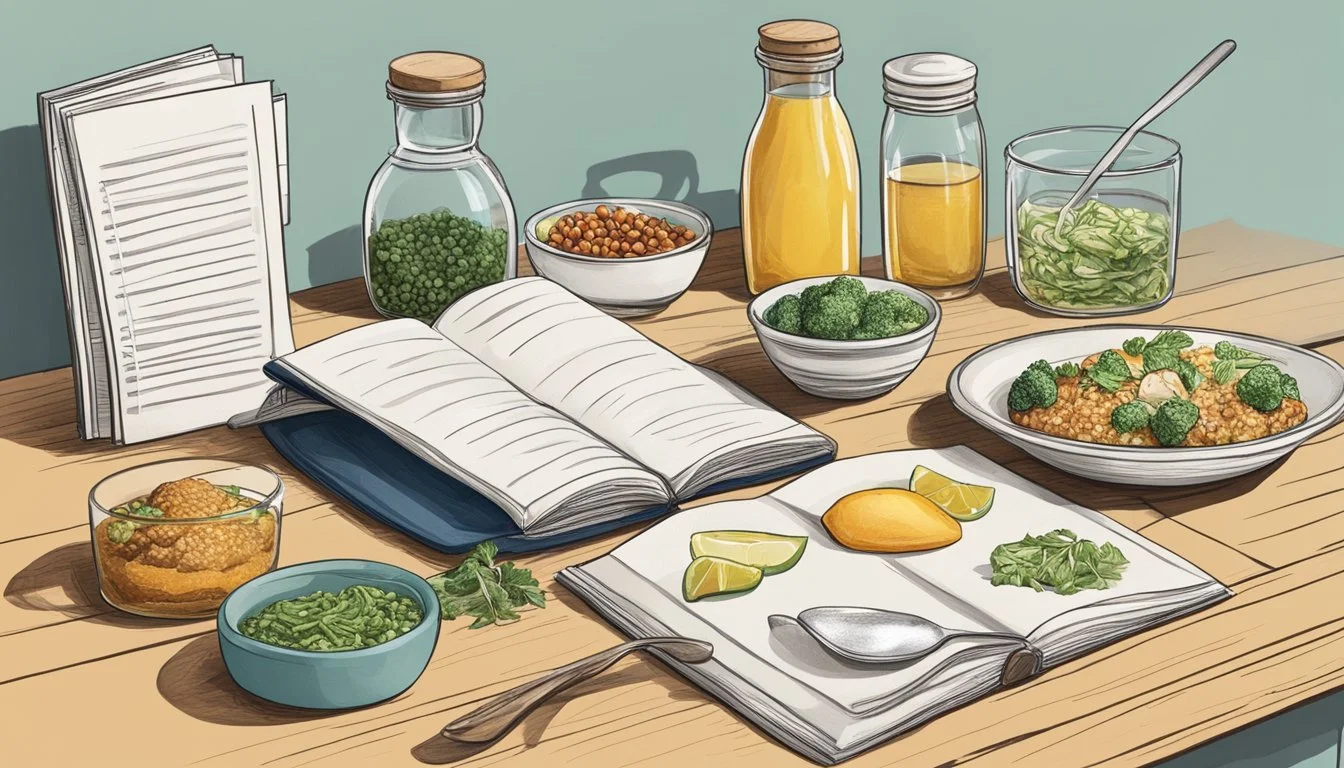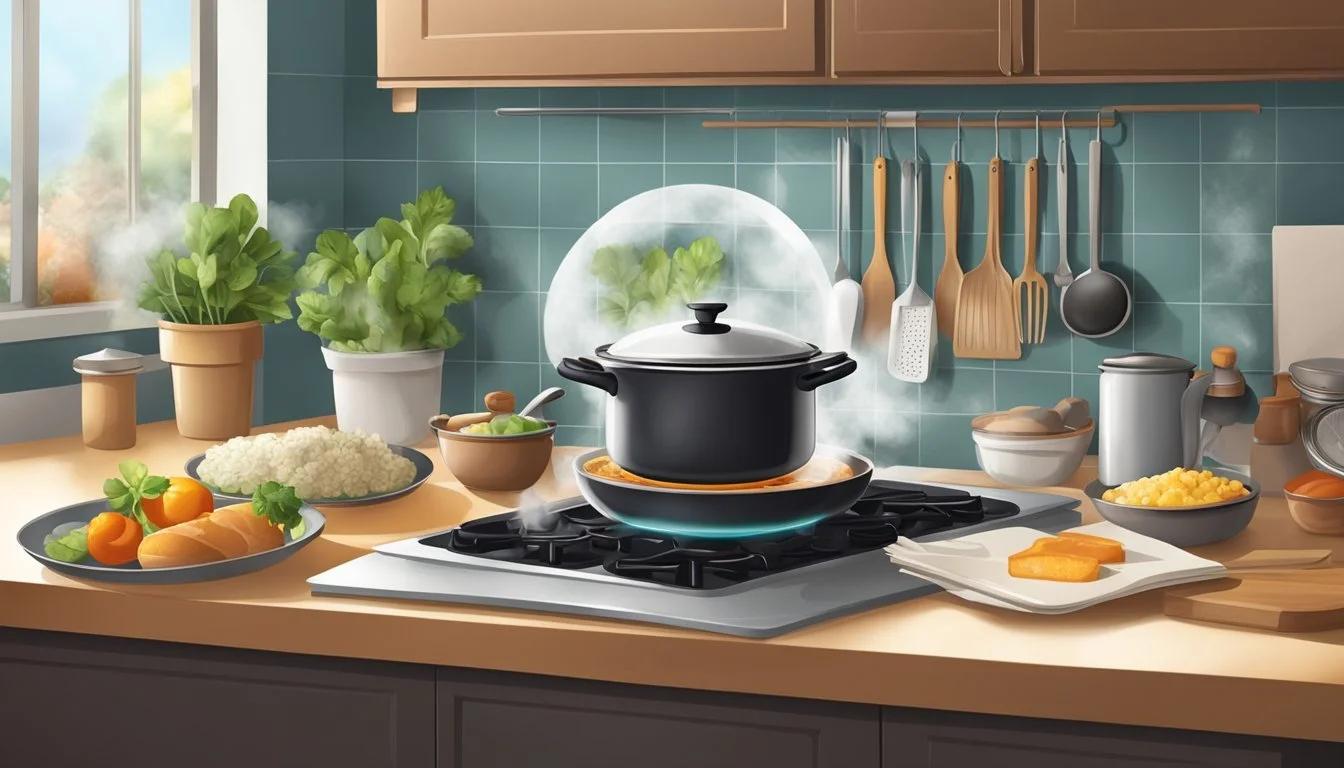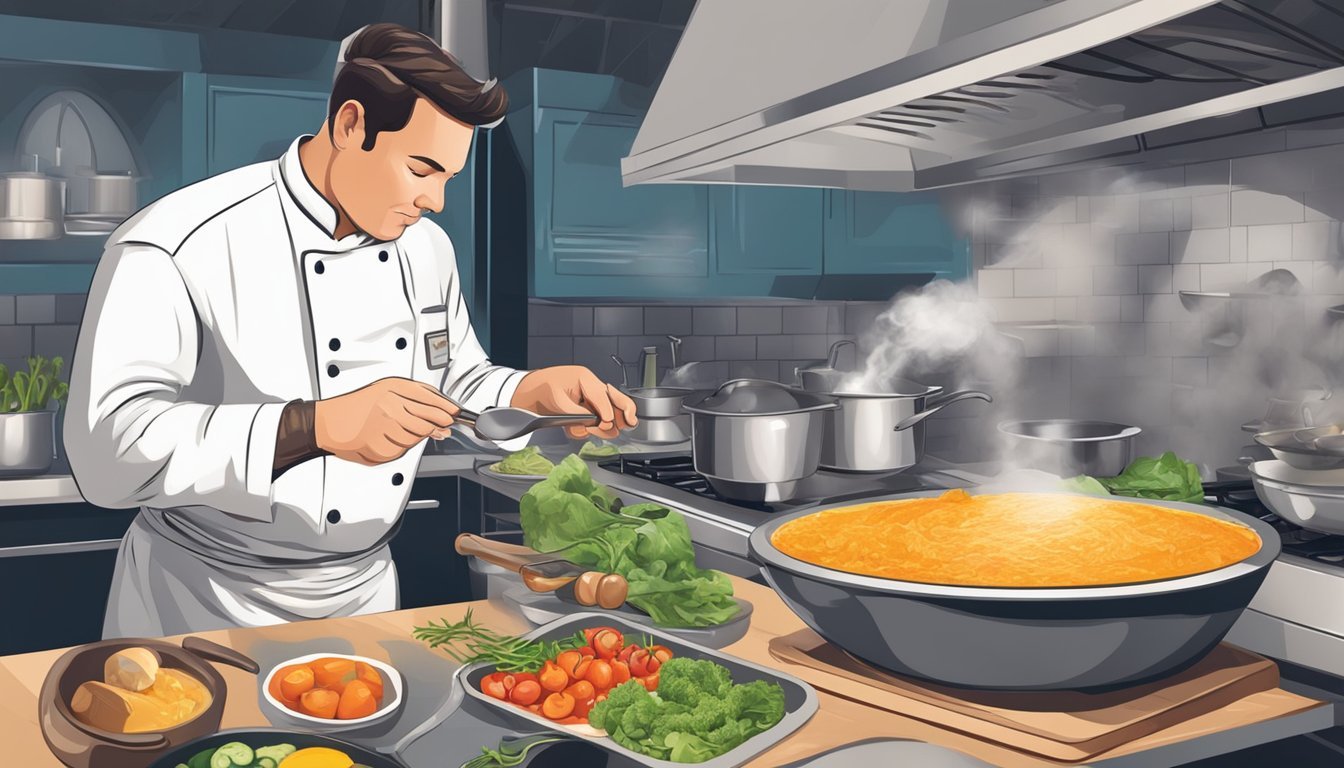How to Cook When You're Trying to Replicate a Restaurant Dish
Mastering the Art of Home Dining
Cooking at home has its charms, but there's a certain allure to the flavors and presentations found in restaurant dishes that many aspire to replicate. Achieving that level of culinary finesse requires more than just a step-by-step recipe. It demands an understanding of technique, quality ingredients, and a bit of kitchen intuition. For food enthusiasts eager to bring the dining-out experience into their own dining rooms, the key is to focus on the essential elements that give restaurant meals their notable character.
While one might be tempted to think recreating restaurant recipes at home is a complex task, it often begins with understanding the basics of a standard recipe and recognizing common components shared by their restaurant counterparts. Restaurants typically do not invent entirely new recipes but instead, refine and perfect existing ones. For a home cook, this means starting with a reliable foundational recipe and making thoughtful adjustments to elevate it to restaurant-quality.
Thorough recipe research lays the groundwork for successful at-home restaurant replication. Observing how establishments play with flavors, textures, and presentation provides valuable insights. Additionally, paying attention to the balance of ingredients, the precise cooking methods, and the small touches of creativity that famous restaurants employ can guide home chefs as they attempt to orchestrate a similar dining experience within the confines of their own kitchens.
Understanding Restaurant Dishes
When attempting to recreate a restaurant dish, one needs to consider three critical aspects: recipe structure, key components, and the execution techniques used by chefs. These points guide the home cook toward achieving a close replication.
Analyzing Popular Restaurant Recipes
An effective strategy begins with a thorough examination of the dish one wishes to recreate. This analysis pinpoints common themes among favorite restaurant dishes. For example, a lamb bolognese at a reputable Italian restaurant likely shares its foundational recipe with traditional bolognese, meaning a home cook could start with a classic recipe and adjust from there. Copycat versions should capture the essence of the dish, focusing on taste and presentation.
Key Ingredients in Signature Dishes
Ingredients play a pivotal role in defining a restaurant's signature dish. Chefs often use a secret ingredient or a unique spice blend to create a standout taste. Quality and freshness of ingredients are paramount. If one identifies that a specific spice or herb is the key to a dish's distinct flavor, sourcing it becomes essential. For example:
Signature Ingredient: Saffron
Dish: Paella
Purpose: Imparts a rich aroma and golden color
Signature Ingredient: White Truffle Oil
Dish: Gourmet pizza
Purpose: Provides an earthy flavor complexity
Techniques Used by Professional Chefs
Finally, the techniques employed by chefs are instrumental in delivering restaurant-quality results. Precision in knife skills, mastery in searing, and finesse in sautéing are some examples that significantly impact the final product. Learning these techniques often requires observation and practice. For instance, achieving crispy skinned fish à la Le Bernardin entails understanding how to properly heat the pan, control the temperature, and time the cooking process.
Preparation Essentials
To replicate a restaurant dish with finesse, one must ensure that they have gathered the right ingredients and cooking tools, and that they have their kitchen workspace primed for the task at hand.
Sourcing Authentic Ingredients
Researching Recipes: Begin by thoroughly analyzing the recipe for the restaurant dish. It is crucial to understand each component before seeking out the ingredients.
Specific Ingredient Questions: Restaurants often use specific, high-quality ingredients to achieve a signature taste. If a recipe calls for a particular type of olive oil or a certain cut of meat, do not substitute for a lower quality option if possible.
Local Markets: Visit local markets or specialty stores to find fresh, authentic ingredients akin to those used in restaurants.
Online Suppliers: If local options are limited, seek online suppliers that can provide the necessary specialty items for your dish.
Cooking Tools and Equipment
Investing in proper cooking tools and equipment can make a significant difference in the quality of a replicated restaurant dish.
Essential Tools:
Knives: A sharp chef’s knife and paring knife
Cookware: Heavy-bottomed pans and pots for even heat distribution
Baking sheets: For roasting and baking with better heat conduction
Precision tools: Measuring cups and a digital scale for accurate ingredient quantities
Cooking Techniques: Familiarize oneself with the required techniques for the dish, whether it's achieving the perfect sear on a steak or the precise baking temperature for cakes.
Setting Up Your Kitchen Workspace
Organization: Before one begins cooking, they should ensure that their workspace is organized. This includes having all ingredients prepped and tools within reach.
Cleanliness: Maintain a clean and sanitary workspace to avoid cross-contamination and ensure a pleasant cooking experience.
Preparation Zones: Establish designated areas for different preparation stages—chopping, mixing, and cooking—to streamline the process and reduce confusion.
Cooking the Dish
When at the helm of replicating a restaurant dish, the chef must focus on three crucial aspects: accuracy of the recipe execution, precise flavor adjustment, and mastery of cooking techniques to ensure the dish reaches its full potential.
Executing the Recipe Accurately
The chef begins by gathering all necessary ingredients, ensuring they are of the highest quality as this significantly impacts the final taste. They meticulously measure each component, following the recipe to the letter—if provided—or their best-researched approximation. Accuracy is paramount; even a slight variation in quantities can alter the dish’s authenticity.
Salt and Pepper: Fundamental to seasoning, they are added with precision, often in increments to build layers of flavor.
Other Seasoning: If herbs, spices, or unique blends are called for, the chef must source the correct variety for authenticity.
Adjusting Flavors and Seasoning
As the dish develops, the chef remains vigilant, regularly tasting and assessing the balance of savoriness and sweetness. Seasoning is adjusted slowly to avoid overpowering the core flavors of the dish.
Balance: They strive for a harmonious balance between all taste components, tweaking with seasoning as needed.
Tasting Notes Adjustments Too savory A pinch of sugar or acid may be introduced Lacking sweetness A small amount of salt could enhance perceived sweetness
Incorporating Cooking Techniques
The chef employs specific techniques that are characteristic of the restaurant-style dish, such as high-heat stir-frying or slow simmering. Mastery of these methods is essential as they influence texture and taste.
High-Heat: For stir-fries, high-heat is essential to achieve the 'wok hei' or the slightly smoky flavor of the dish.
Gentle Simmers: For sauces or braises, a gentle simmer can intensify flavors without overcooking delicate ingredients.
By executing the recipe accurately, maintaining the balance of flavors through meticulous tasting and seasoning, and deploying the correct cooking techniques, the chef ensures that the replicated dish mirrors the quality and taste of the restaurant’s version.
Recreating Special Features
When attempting to replicate a restaurant dish at home, one must focus on special features such as texture, aroma, presentation, and essence to achieve a version that closely resembles the dining-out experience.
Achieving the Right Texture and Aroma
The texture of a restaurant dish is often obtained by precise cooking techniques and ingredient selection. For instance, achieving the creamy consistency in an Alfredo sauce demands a careful balance of butter, cream, and cheese, gently heated to avoid separation. The aroma, a pivotal aspect of any dish, can be captured by using fresh herbs and toasting spices, which should be added at optimal times during the cooking process to release their fragrances. In Asian stir-fries, for example, high heat and quick cooking can help sear in flavors, creating a tantalizing scent akin to that of a restaurant wok station.
Emulating Restaurant Presentation
An important feature of restaurant dishes is their presentation, which enhances the dining experience. Focusing on plating techniques can elevate a homemade dish significantly. Here are a few tips for presentation:
Symmetry: Balance the elements on the plate.
Color: Contrast colors for visual appeal.
Garnish: Add edible garnishes like herbs or citrus zest. For example, a well-presented bowl of sweet dessert can have color contrasts and garnishes that mimic those found in high-end restaurants.
Capturing the Dish's Essence
Recreating a restaurant dish is more than just mimicking its look and flavor profile. To truly capture the essence of a restaurant dish, home cooks must discern the core components that give it its restaurant dish feel. This could mean using a specific type of sweetener, like agave instead of sugar, to match the underlying taste notes. Or it may involve refining cooking methods, like searing meat at high temperatures to create a complex flavor profile that is often found in restaurant-quality steaks. Each element should be considered to recreate the sensory experience that makes the dish distinctive in a restaurant setting.
Post-Cooking Tips
Once the dish is cooked, the focus shifts to proper resting, serving, and handling of leftovers which are crucial to replicating the restaurant-quality experience.
Resting and Serving the Dish
After cooking, resting the dish is essential. For meats, this allows the juices to redistribute, ensuring that they are moist and flavorful upon serving. Typically, one should rest meat for approximately 5 minutes per inch of thickness. When the dish is adequately rested, serve it on warm plates to maintain its temperature and enhance the taste experience.
Pairing with Sides and Garnishes
Choosing the right sides and garnishes can uplift the main dish, mimicking the balanced taste profiles found in restaurants. Here are standard pairings:
Steak: Serve with garlic mashed potatoes and steamed asparagus.
Seafood: Complement with lemon-infused rice and sautéed greens.
Garnishes should be applied sparingly so as not to overpower the main dish. A sprig of fresh parsley or a dusting of finely grated cheese often suffices.
Storing and Reusing Leftovers
Handling leftovers correctly ensures the dish can be enjoyed again with minimal loss of flavor. Store leftovers in airtight containers within two hours of cooking, and refrigerate. For soups and stews, they might even taste better the next day after the flavors meld further. Reheat leftovers thoroughly to 165°F before serving again to maintain food safety and taste quality.
Troubleshooting & Accuracy
When attempting to replicate a restaurant dish at home, cooks often face challenges in achieving a high level of accuracy and managing dietary considerations. This section will provide guidance on identifying common pitfalls, reaching close replication, and adjusting for food sensitivities.
Identifying Common Pitfalls
The first step in successful replication is to identify potential errors early. Home cooks should ask specific ingredient questions to ensure they are using the right type. For instance, if a recipe calls for "olive oil," they should determine whether it is extra-virgin or light, as this can impact flavor. Additionally, they should be aware of cooking techniques and temperatures, as these can drastically change the outcome. Keeping a meticulous eye on details such as ingredient ratios, cook times, and preparation methods is crucial for success.
Achieving 95% Accuracy in Replication
One should strive to achieve at least 95% accuracy when replicating a dish. This means focusing on:
Key Ingredients: They must match the restaurant’s choice as closely as possible.
Preparation Techniques: These should be mirrored carefully, such as marinating times or chopping sizes.
Taste Testing: One should continuously compare the taste of their dish to the restaurant version, making incremental adjustments as needed.
Presentation: They must pay attention to how the dish is plated and served.
This precision ensures the final product not only tastes like the original but also looks and feels like it.
Adapting to Food Sensitivities or Allergies
Cooks must consider food sensitivities or allergies, which can complicate replication. They should:
Substitute Wisely: Find alternatives that maintain the integrity of the dish while ensuring safety. For example, for a lactose intolerant individual, they might use lactose-free cheese or a cheese alternative.
Clear Labelling: If replicating a dish for guests with allergies, the cook must clearly label all ingredients to avoid cross-contamination.
Communication: They should ask guests detailed questions about their allergies and sensitivities to ensure the dish is safe for consumption.
Additional Resources
When aiming to recreate restaurant-quality dishes at home, one can find a wealth of resources at their disposal. From detailed cookbooks to interactive online forums and insights from cooking experts, these tools can enhance one's culinary skills and understanding of restaurant-style cooking.
Utilizing Cookbooks and Video Blogs
He or she may begin by exploring a variety of cookbooks that specialize in restaurant recipes. These cookbooks often provide detailed guidance on techniques and ingredient use. Additionally, one might turn to video blogs that showcase step-by-step cooking processes, which often include tips to achieve the desired authenticity. Google can serve as a useful tool for finding relevant cookbooks and video blogs focused on restaurant dishes.
Cookbooks: Notable for precise instructions and curated recipes.
Video Blogs: Great for visual learners and to understand intricate cooking techniques.
Learning from Online Cooking Communities
Participation in online cooking communities offers a valuable opportunity to exchange knowledge and seek advice. These forums are beneficial as individuals can ask questions and receive personalized responses from fellow home cooks and enthusiasts, all intent on replicating restaurant-style meals.
Forums: A platform for discussion, inquiries, and shared experiences.
Recipe Sharing: Members often upload their successful restaurant dish recreations.
Engaging with Chefs and Expert Cooks
One should not hesitate to engage with professional chefs who might share their expertise through workshops, social media, or their own video blogs. They may offer the unique chance to learn complex restaurant recipes or secret techniques that would be difficult to figure out alone. Many chefs are approachable and willing to respond to questions about their culinary methods.
Workshops: Direct learning experiences under professional guidance.
Social Media: An informal way to connect and glean insights from culinary experts.
By leveraging these additional resources, individuals can make significant strides in their efforts to replicate the finesse and flavor of restaurant dishes in their own kitchens.






